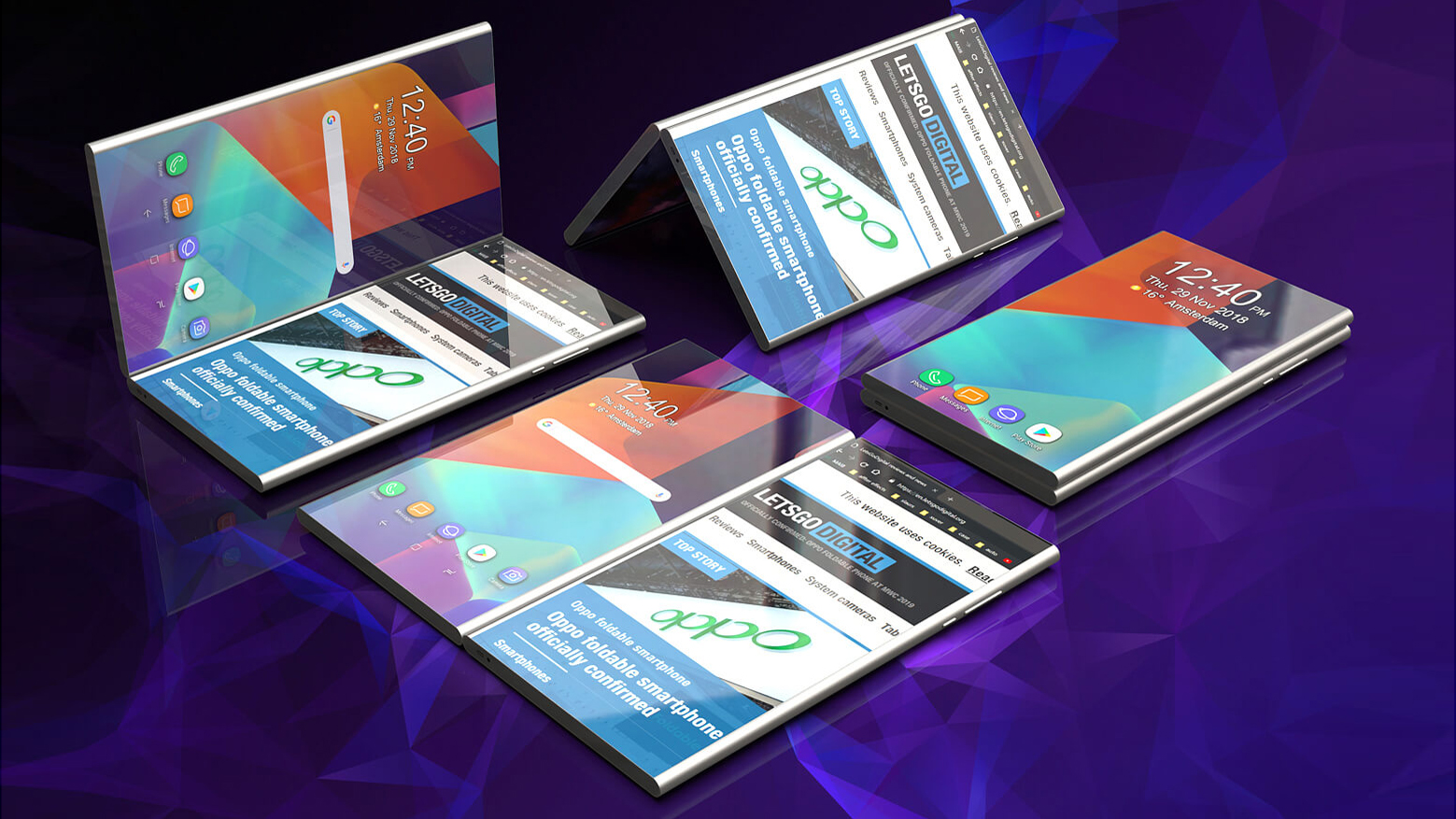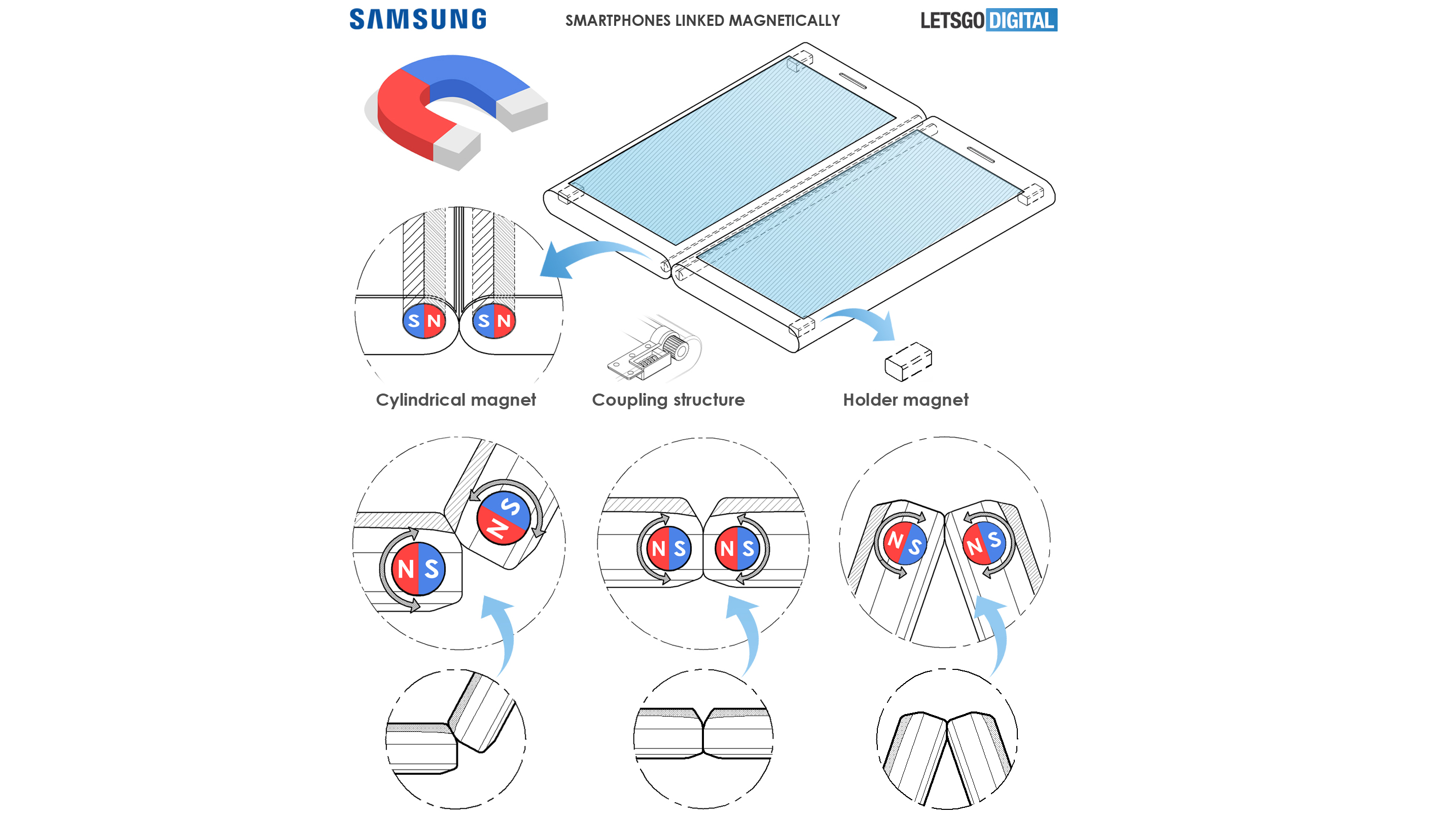Forget the Galaxy X folding phone, Samsung's next big idea is for its phones to connect with magnets
Snap two separate smartphones together to play Candy Crush on a tablet-sized screen


Samsung is desperately trying to find a way to increase the amount of available screen real estate to its smartphone owners, while not burdening them with the onus of carrying around a handheld gadget with a gargantuan display.
To achieve this goal, we already know the South Korean company is looking into folding devices with a pliable screen that can be folded-up and stowed away when you're not watching a movie, playing a video game, or anything else that might require a larger display. And now, thanks to a new patent, we know the company is also looking into the possibility of two separate screens that attached together with magnets à la Transformers toys from the '90s.
The patent was filed with the World Intellectual Property Organisation (WIPO), before it spotted by those eagle-eyed folks over at technology blog LetsGoDigital.
The document was published on January 3, 2019 . It describes how two handsets – each with its own screen, processor, and case – can be snapped together to work as a single unit with a much larger display.
According to the patent, Samsung is developing software that will recognise when the handset is magnetically attached to another and will link the displays so that content can extend across the entire screen – so, two people could snap their Samsung Galaxy smartphones together to watch a film together on a bigger display.
The patent also describes moments when the displays can be used independently – so smartphone owners could browse the internet on one side of the display, while composing an email on another.

It's also possible to attach two Samsung smartphones back-to-back, the patent states, so that there is a display on each side of the device.
Get all the latest news, reviews, deals and buying guides on gorgeous tech, home and active products from the T3 experts
However, it's not immediately obvious from the patent document what the advantage of this set-up would be.
Presumably, some kind of mobile game where smartphone owners compete against one another and don't want to cheat by looking at the other players' screen ... although that begs the question, why not just keep the devices separate?
As always, it's worth taking this information with a healthy pinch of salt. After all, companies like Samsung patent a slew of different technologies that never make it out of the R&D department and onto the shelves. Although we've seen a working prototype of the foldable Galaxy X – albeit heavily disguised – Samsung has yet to produce anything on-stage that looks remotely like the magnet-powered system covered in this latest patent.
If that changes at all, T3 will have all of the news and opinion. Stay tuned.
Lead Image Credit: LetsGoDigital

As a former Staff Writer for T3, Aaron writes about almost anything shiny and techie. When he’s not barking orders at Alexa-powered microwaves or gawping at 5G speed tests, Aaron covers everything from smartphones, tablets and laptops, to speakers, TVs and smart home gadgets. Prior to joining T3, Aaron worked at the Daily Express and and MailOnline.